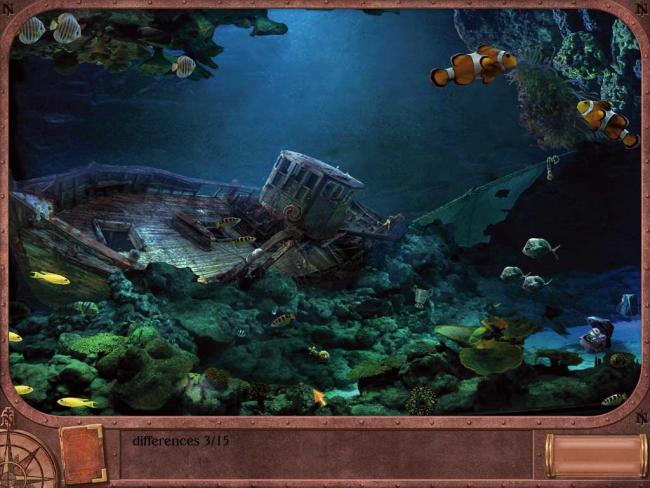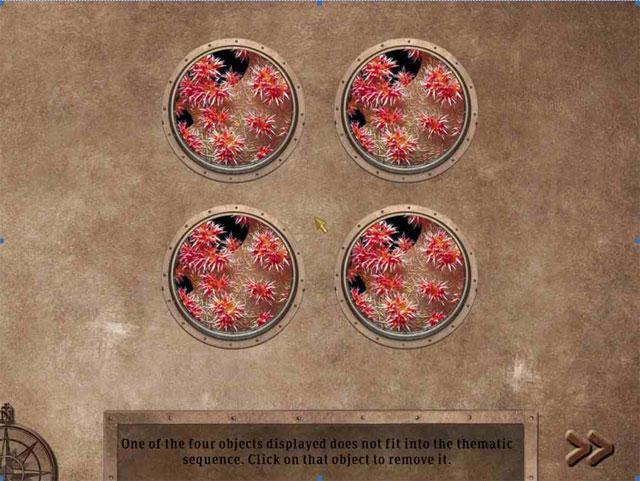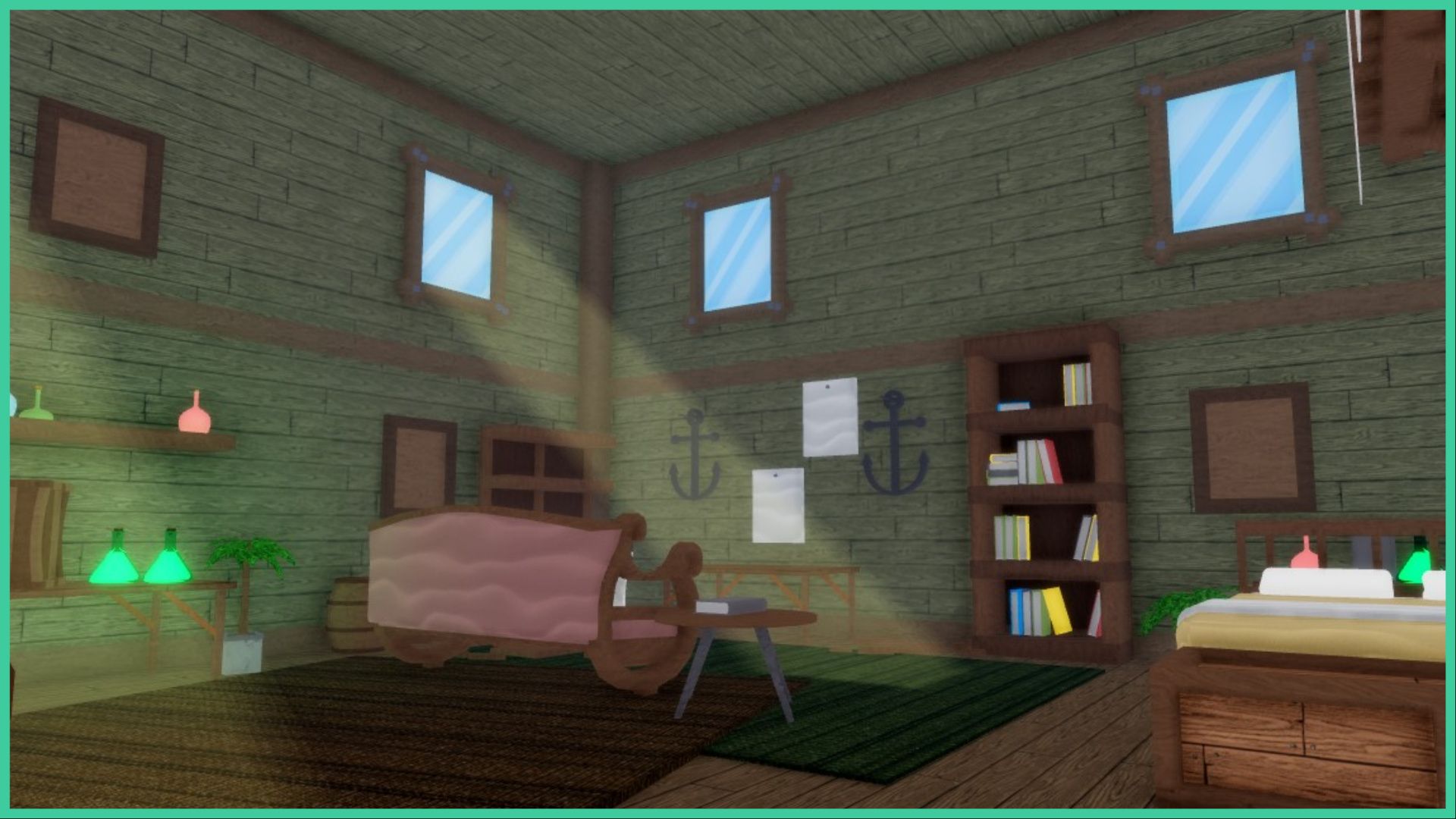- Wondering how to get Monopoly GO! free rolls? Well, you’ve come to the right place. In this guide, we provide you with a bunch of tips and tricks to get some free rolls for the hit new mobile game. We’ll …
All Grades in Type Soul – Each Race Explained
By Adele Wilson
Our All Grades in Type Soul guide lists every grade in the game for all races, including how to increase your grade quickly!Best Roblox Horror Games to Play Right Now – Updated Weekly
By Adele Wilson
Our Best Roblox Horror Games guide features the scariest and most creative experiences to play right now on the platform!All Legacy Piece Races and Buffs – Should You Reroll?
By Adele Wilson
Our Legacy Piece Races guide discusses the buffs that each race provides, their rarities, and if you should reroll or save your spins!
20,000 Leagues Under the Sea Review
I was an English Literature major in college. I love books, especially classic novels. In fact, when I’m not playing games on my PC or iPhone in my spare time, you can usually find me curled up in a corner somewhere with my nose in a book. So, when I got the assignment to review a PC game based on one of the great literary classics, 20,000 Leagues Under The Sea by Jules Verne, I set out on my journey with high hopes and great expectations.

I was an English Literature major in college. I love books, especially classic novels. In fact, when I’m not playing games on my PC or iPhone in my spare time, you can usually find me curled up in a corner somewhere with my nose in a book. So, when I got the assignment to review a PC game based on one of the great literary classics, 20,000 Leagues Under The Sea by Jules Verne, I set out on my journey with high hopes and great expectations.
Unfortunately, I was sadly disappointed. While there are some aspects of this hidden object game I did like, the negative points outweighed the positive, and I ultimately found myself not having any fun. I did enjoy the story, but that was a given to begin with. A great story, setting, and characters are all part of the benefits of working with a classic novel. The trick is to blend them all effectively with good design and terrific artwork to make an engaging game.
For example, even though I like to read, I thought the game had a too much text, or should I say I was forced to read too much text at times before I could progress. And the character artwork was rendered in a style that took me out of the “adventure” of the game. The characters were depicted in hand-drawn sketch form, as if they were cut-out and pasted from the journal over the full color scenes behind them. Some might say this is an art technique to try and make the game look old fashioned or “vintage,” but for me it simply made wish the artists had fully rendered the characters in color.
20,000 Leagues Under The Sea plays like a standard hidden object game in that you hunt for various items, some of which you need to accomplish tasks, but you never store anything in inventory or actually place any objects you find into a scene. I didn’t like the way objects were hidden, nor did I enjoy looking for the same briefcase, glasses, weights, lizard, sticks, teapot, saw blade, etc. over and over again.
As you might expect, most of the hidden object scenes take place either inside the submarine or out in the ocean. I was sometimes disappointed by the quality of the artwork. I was hoping that I would see beautiful underwater scenes that would make me want to break out my SCUBA gear. Sadly, the underwater scenes were so poorly executed and so overly filled with junk that it felt more like I’d stumbled into an underwater dumping ground than a classic adventure tale.
Now for the most frustrating aspect of the game: the mini-games. Most of the mini-games are of the “spot-the-difference” variety, though you will be quite deceived if you follow that logic. One of the early “spot-the-difference” puzzles was rendered in “mirror-image” form. I dislike this format because you’re really not looking at two side-by-side scenes that are essentially the same; rather, you’re looking at one scene that is an inversion of the other (which makes side-by-side comparisons very challenging). In some cases, objects that look the same (such as two model boats that point in the same direction) are actually considered differences because the two scenes are in mirror image.
Many of the “differences” were so small and so difficult to spot that even when I used the hint button, I could not tell what “difference” it was indicating. I just randomly clicked in the general area to get through it. Other mini-games were just plain confusing. For example, I was presented with four objects: three starfish and one blowfish. The instructions read: “One of the four objects displayed does not fit into the thematic sequence. Click on that object to remove it.” Okay, there are three starfish, so that must be the theme. I clicked on the blowfish, and I was right. A few more like this and I’m having some fun, recognizing the theme and selecting the item that doesn’t fit. But then I am presented with four seemingly identical objects with the same instructions. Four identical starfish. Four photographs of small pink and orange sea urchins that look exactly the same. Fortunately, you can just click through these mini-games without much penalty or time lost. 
So, what did I like about the game? The story was good, of course. I thought the piano music was very nice to listen to, and it probably kept me from becoming even more frustrated than I was at times. However, I did think the humming, droning ambient soundtrack in the engine/boiler room was horribly annoying and I had to shut it off. Some well-done character voice-overs might have helped the game quite a bit, but this was missing. Some of the art was rendered well, but no scenes were really in focus with any sharpness or clarity because the developers did a lot of blending of 2D photographs. I personally don’t like hidden object games where the scenes are chock full of items, disproportionate to their size in real life, where the objects are just smattered about without any regard to gravity or logic. I prefer there be some kind of natural logic to the placement of the items. If you’re one of those players who couldn’t care either way, you’ll probably enjoy this game more than I did.
Ultimately, 20,000 Leagues Under The Sea falls short of its grand promise, which was to be a beautiful, exotic hidden object adventure game to match the source material. If anything, this game might encourage players to spend their free time picking up the book instead so they can see what happens to Captain Nemo in the end.

The good

The bad
More articles...
Monopoly GO! Free Rolls – Links For Free Dice
By Glen Fox
Wondering how to get Monopoly GO! free rolls? Well, you’ve come to the right place. In this guide, we provide you with a bunch of tips and tricks to get some free rolls for the hit new mobile game. We’ll …All Grades in Type Soul – Each Race Explained
By Adele Wilson
Our All Grades in Type Soul guide lists every grade in the game for all races, including how to increase your grade quickly!Best Roblox Horror Games to Play Right Now – Updated Weekly
By Adele Wilson
Our Best Roblox Horror Games guide features the scariest and most creative experiences to play right now on the platform!All Legacy Piece Races and Buffs – Should You Reroll?
By Adele Wilson
Our Legacy Piece Races guide discusses the buffs that each race provides, their rarities, and if you should reroll or save your spins!







